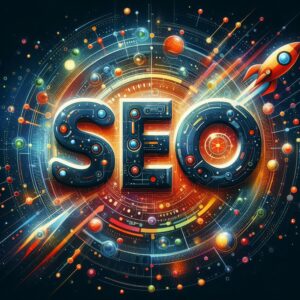Harnessing the Power of AI Technologies to Revolutionize Your Solo Venture
Imagine starting a business that quickly grows, punching way above its weight, but here’s the twist: you’re the only person on the team.
In this article, I’m going to show you nine amazing AI tools that are going to help you start your one-person business as if you had an entire team supporting you.
But do you know what the biggest roadblock is for solo entrepreneurs?
It’s not lack of talent or even lack of money; it’s time.
You know time is the one resource you can never get back.
So, what if I told you that with the right set of AI tools, you could reclaim your time and actually focus on what you love doing in your business?
Stick around because by the end of this article, you’ll not only have a list of solid AI tools but also a blueprint on how to integrate them seamlessly into your one-person Empire.
We strongly recommend that you check out our guide on how to take advantage of AI in today’s passive income economy.
Table of Contents
1. Picking the Right Business with AI Technologies
It all starts with picking your business.
Billionaire investor Warren Buffett tells a funny story about a friend he met at Columbia.
According to Buffett, this friend wasn’t only harder working than him; the guy was even smarter.
Then after college, they went their separate ways, Buffett into investing, obviously, and the friend into the steel business.
So, you’d think that the smarter, harder-working friend would be a billionaire by now too.
And he did all right in the steel business, but he didn’t come near the billions that Buffett made.
Warren Buffett later said, “It’s not about how hard you row, but what boat you’re in.”
And Validator.ai is the perfect tool to help you pick the right boat.
Just enter in a description of your business idea and click “Give me feedback,” and then AI will immediately step in with a few critiques.
Maybe it pokes some holes in your business idea, or maybe it offers a suggestion you didn’t think of.
I just entered in the first kind of business I could think of: providing web design, hosting, and copywriting to healthcare centers as a service.
Right away, Validator.ai warned me about the high competition in the space, so that just means I’ll need a differentiator.
Then it pointed out that the healthcare industry comes with a whole lot of data security and compliance issues, which might open my business up to lawsuits if anything were to go wrong.
It definitely raises some good points.
It’s then up to you to decide if the holes that it pokes in your idea are things you can be prepared for, work around, or just decide it isn’t worth it and try something else.
This simple AI tool could save you months, maybe even years of frustration.
At least now you’re in the right boat.
2. Crafting the Perfect Business Name with AI Technologies
But a good business idea won’t get too far without a good name, and luckily, ChatGPT can help you out here.
But if you want a really good, memorable name, you do have to know how to ask.
Let’s take a look at an example.
So, I imagine starting a wedding photography business, and I typed in, “I’m starting a wedding photography business. Please recommend five names for that business that will work.”
The results are fine, not bad, but not very good either.
They’re all kind of vague without really expressing any unique identity.
So, I got more specific.
Now I mentioned a specific angle to my photography business and asked for more ideas.
Rather than getting names about vows and love, ChatGPT gave me some pretty decent ideas.
I have to admit, I wouldn’t have thought of any of these on my own.
3. Designing an Eye-Catching Logo with AI Technologies
I’ll be the first to admit it: when a business website has a bad logo, my soul dies just a little bit.
But here’s the thing: your customers will judge your business based on a bad logo too, whether or not they’re even aware they’re doing it.
And sure, you could go cheap, hire someone on Fiverr, make something with a free account on Canva, but let’s be honest, cheapness shows.
And if you have tons of revisions for your designer, the money is just going to add up anyway.
So, I say forget all that and just use Brandmark.ai.
It gives you endless revisions, infinite variations; you can keep using it until the right logo pops out at you.
It’s like having a customized logo designer ready to take your instructions 24 hours a day.
Does it always get it right? No.
But that’s the idea.
No logo is right the first time, so why pay an expensive hourly rate for designers if you know you’re probably going to have lots of tweaks?
And you’ll be surprised how quickly Brandmark figures out what you need.
You can set rules like an AI color palette or use its font generator to try out different letter styles.
Just try to avoid the temptation to keep going and going because it can be a little too much fun.
4. Streamlining Project Management with AI Technologies
Once you get paying clients, you’re going to discover a universal truth: the more time you spend on paid client work, the more money you make, at least in the short term.
But you can’t build a business without getting organized, which is why successful businesses sometimes get bogged down on the back end: project management.
So, I recommend ClickUp.
ClickUp recently introduced AI into their project management tool, and it’s kind of mind-blowing.
Say you’re a freelance web writer, and a client reaches out to you asking for a content update on their site.
The problem is, you’re busy.
But turn to ClickUp.
Just input a few details – tone of voice, web page titles – and it’s going to spit out a ready-made content outline that you can forward to the client for their approval.
Maybe that used to take you about a half hour.
Now it’s done in less than a minute.
ClickUp does more than write for you, though.
It can create meeting summaries, pull out action items from really long client documents, or write emails so you can go straight from ClickUp to “sent” with no work spent in between.
So you can get back to making money.
5. Building Your Email List with AI-Powered Lead Magnets
If I was going back and building my first business today, I’d do one thing differently.
I’d start building an email list even before I started working with a single customer.
And that’s because the size and strength of your email list is directly tied to the success of your business.
If you have a good list, you can let them know whenever you’re offering a promotion or when you have new availability to take on a new client, and you can sell that out thanks to one email.
No list? You’ll have to work 10 times as hard to make the same amount of money.
But to build your list, you need something better than a newsletter because, trust me, people don’t want to sign up for your newsletter or anyone’s newsletter.
Instead, you need a lead generator, also known as a lead magnet – a piece of helpful, actionable content.
It’s an incentive you send out to interested prospects in exchange for their email address.
The beautiful thing about lead generators is they only require a one-time investment.
You make it once, then you send it out thousands of times.
Just drop it on your website, let it hook in leads, and slowly build your community.
It’s the difference between going out with a fishing lure and hoping for clients, and setting up a fishing net that does all the work for you.
And to create your lead generator, I think ChatGPT is your best bet.
Just fill it in on your business, who your customers are, the problems you solve for them, and then ask it for 10 unique lead generator ideas with really juicy, click-baity titles.
Because when it comes to lead magnets, the title is just as important as the content itself.
It has to be intriguing, has to promise an actual result or outcome, not just that you’ll teach them something.
So take that initial list of titles and either ask for changes at this stage or pick one and run with it.
Just tell ChatGPT that you like this one, and you want it to help you outline it.
Then, once you’re happy with the outline, it can actually help you write it in any tone or style you’d like.
Want it to be casual and funny? Just ask.
Want it to sound like it’s in the style of Alex Hermosi or Pat Flynn? It can do that too.
6. Creating Engaging Quizzes with AI Technologies
But what if you wanted to go a step further with your lead magnet and do something a little more interactive?
Quizzes make compelling lead generators because they’re all about the most important subject: your customers.
We all like knowing more about ourselves.
So if you’re a solopreneur who sells financial coaching, then a quiz like “What’s your spending personality?” is going to be too interesting to pass up.
But unfortunately, building a quiz like that is hard.
Actually, it’s not anymore.
Interact.ai fixes that.
So you just visit tryinteract.com, enter your website address, tell it a few things about your business.
No coming up with the questions yourself, no figuring out complicated algorithms so that the quiz can spit out accurate results.
Interact is going to take what you’ve given it and create you a custom quiz you can actually use.
Let’s say you’re starting a coaching business selling fitness consultation.
So while your competitors are sending out a “5 Tips to Get Abs by Summer” ebook for their lead generation, what if your website has a quiz: “What’s the Perfect 6-Week Training Program for Your Body Type?”
Every customer wants to feel special.
They want something tailored for them.
I’m not only going to sign up for the quiz for a training program, I’m genuinely curious about what the quiz is going to say about me.
What body type am I?
7. Generating Ads with AI Technologies
So, you’ve created a killer lead magnet, but if you don’t promote it, it’s like setting up a lemonade stand in your backyard.
Nobody’s ever going to see it.
The most reliable way to get attention to any new business is just to buy it, and the most reliable way to buy it is through Facebook and Instagram ads.
These platforms are great because they give you laser focus on your market and on your niche.
But if you don’t have the time or the expertise to come up with your own ads, you can turn that whole process over to AI too.
Use AdCreative.ai to generate everything: branding, images, even the creative behind your ad.
I’m going to be honest here.
Sometimes making ads work on Facebook and Instagram is all down to trial and error, and you don’t have the time or energy to sit down and come up with all of this yourself.
Just tell AdCreative what you need – your brand, the size you need, the gist of your text – and let it spit out some potential ads.
And what I really like about AdCreative is that you can still overrule its suggestions if you want.
If you have a great headline idea, go ahead, write that in.
But if you’re stumped, click “Text AI” and let it write it for you.
And if you want to take this even further and run video ads for your lead magnet, try Invideo’s brand new AI tool.
Just prompt it with a bit about your lead magnet, what it promises, and who it’s for, and just watch as Invideo puts together a completely custom video ad, complete with premium b-roll video, music, voiceover, and even text onscreen callouts.
And you can try this completely for free.
8. Streamlining Business Management with AI Technologies
So now all these customers are flooding in, and you’re hit with a whole new challenge: getting paid.
When you’re running a one-person business handling tons of clients, things like missed invoices and overlooked contracts can really keep you from growing.
In fact, the average solo business owner spends up to 80% of their time on business management, things like chasing down payments, answering leads, that kind of soul-sucking stuff.
And when you’re running it alone, that leaves almost no time left to actually take care of the customers you have and focus on growing your business.
Honeybook is like an AI business manager.
It handles every pipeline, even the ones you didn’t ever think of.
So use it to sign contracts, send invoices, track new leads, build workflows.
But their AI tool really kicks it into high gear here.
This is what got me interested.
Their AI-powered client flow is all about working smarter, not harder.
So just imagine having a 30% higher booking rate and leads that are two times more profitable.
That’s what they’re promising, along with a 20% faster response time.
But that’s not all.
It’s designed to save you time by handling those tasks you have to do over and over again, like chasing down leads.
And it doesn’t just do the tasks; it gives you valuable insights from predictive models to help you book more clients.
They even have a feature called “Priority Leads” in the Honeybook app to help you focus on the leads that are much more likely to book.
9. Crafting Your Website Copy with AI Technologies
Okay, but now it’s time for the fun part of starting your own business: getting your website off the ground.
You know you need one, and you know that AI can help you there too, just maybe not in exactly the way you’re thinking.
But I actually want to show you my entire start-to-finish method for writing your entire website using ChatGPT.
It’s all about putting the right prompts in to get the best words out.
I’m talking words that’ll sell your business for you all day, every day, on autopilot.
Conclusion
In conclusion, starting a one-person business can be a daunting task, but with the power of AI technologies, it doesn’t have to be.
By leveraging the right AI tools, you can streamline your business processes, save time, and focus on what you love doing most.
From validating your business idea to designing your logo, managing projects, building your email list, creating engaging quizzes, generating ads, and crafting your website copy, AI technologies can help you every step of the way.
So don’t let the challenges of running a solo venture hold you back.
Embrace the power of AI and watch your one-person empire thrive.
Frequently Asked Questions (FAQ)
What are the 4 types of AI technology?
The four main types of AI technology are:
- Reactive Machines: These AI systems can only react to current situations and do not have the ability to learn from past experiences or store memory. Examples include Deep Blue, the chess-playing supercomputer.
- Limited Memory: These AI systems can learn from past experiences and store limited memory, which they use to make decisions. Examples include self-driving cars and chatbots.
- Theory of Mind: This type of AI technology is still in development and aims to understand and simulate human emotions, beliefs, and intentions. It would enable AI to interact with humans more naturally.
- Self-Aware: This is the most advanced type of AI technology, which is yet to be achieved. A self-aware AI system would possess human-level consciousness, self-awareness, and the ability to form its own desires and beliefs.
What is the technology of AI?
The technology of AI encompasses various disciplines and techniques, including:
- Machine Learning: This involves training algorithms to learn from data and improve their performance over time without being explicitly programmed.
- Deep Learning: A subset of machine learning that uses artificial neural networks to process and learn from vast amounts of data.
- Natural Language Processing (NLP): This enables AI systems to understand, interpret, and generate human language.
- Computer Vision: This technology allows AI to interpret and understand visual information from the world, such as images and videos.
- Robotics: AI is used in robotics to create intelligent machines that can perform tasks autonomously and adapt to their environment.
Which technology AI used most?
Currently, the most widely used AI technology is Machine Learning, particularly Deep Learning. This is due to the availability of large datasets, increased computing power, and advancements in neural network architectures. Deep Learning has been successfully applied in various fields, such as:
- Image and speech recognition
- Natural language processing
- Recommendation systems
- Autonomous vehicles
- Healthcare and medical diagnosis
What is the best AI technology?
There is no single “best” AI technology, as the effectiveness of an AI system depends on the specific problem it is designed to solve and the available data. However, some of the most promising and impactful AI technologies include:
- Deep Learning: This has revolutionized many industries, from computer vision to natural language processing, enabling AI systems to learn from vast amounts of data and achieve human-level performance in certain tasks.
- Generative AI: This technology, such as Generative Adversarial Networks (GANs) and Transformer models like GPT-3, can create new content, including images, music, and text, based on patterns learned from existing data.
- Reinforcement Learning: This type of AI technology enables systems to learn through trial and error, by receiving rewards or penalties for their actions in a given environment. It has been successfully applied in robotics, gaming, and optimization problems.
- Explainable AI (XAI): As AI systems become more complex and are used in critical decision-making processes, there is a growing need for transparency and interpretability. XAI focuses on developing techniques that allow humans to understand and trust the decisions made by AI systems.
Ultimately, the best AI technology for a given situation will depend on the specific requirements, available data, and desired outcomes of the project.

We strongly recommend that you check out our guide on how to take advantage of AI in today’s passive income economy.




